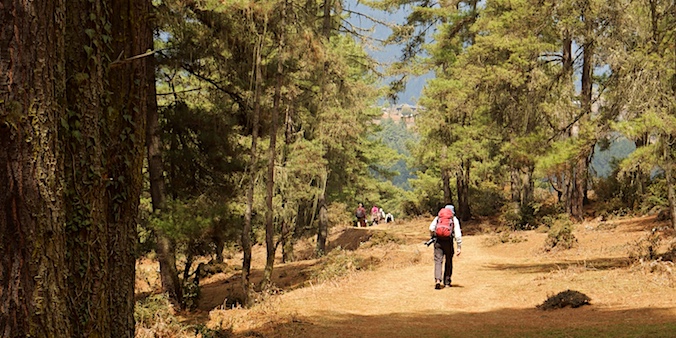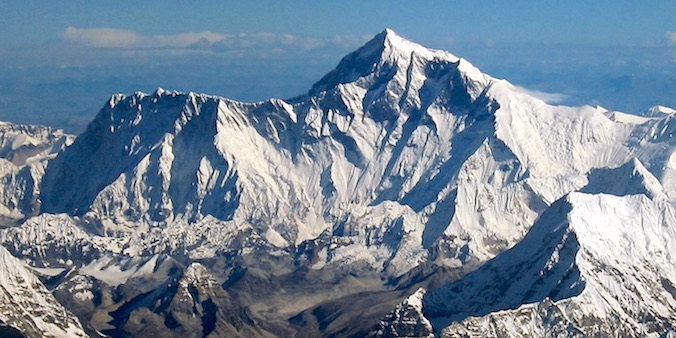DARJEELING, SIKKIM & BHUTAN
Tour - 19 days
About Darjeeling, Sikkim & bHutan
Sikkim and neighboring Darjeeling have a lot to offer to mountain lovers, aficionados of Buddhist culture and trekkers. Wedged in between Nepal, Bhutan and Tibet – but part of India – this region shares a lot with these areas.
Darjeeling, situated at 2040m, has the typical atmosphere of Indian hill stations. It was the former summer capital of British India, and has preserved much of the old-world charm. Darjeeling is world-famous for its tea, which is grown in extensive tea estates that clad the surrounding slopes. Being very close to the tallest mountains on earth, especially number 3, the Kangchenjunga (8586m) it also boasts great views from most hotel windows.
It’s next-door neighbour Sikkim – of which it used to be part – is a gem of cultural and natural diversity. Until 1974 Sikkim was an independent kingdom, now it is part of India. It is home to different Himalayan peoples, most from Nepali descent or originating from Tibetan and Bhutan, such as the Bhutias who brought Buddhism to the area four centuries ago. Thanks to them Sikkim boasts of colorful Buddhist monasteries and Buddhist festivals. The Lepcha’s, until a few decennia ago forest-dwelling animists, hold a unique culture that the Sikkimese government is trying to preserve.
Read more…Read less…Bhutan is mainly known for its very original culture and nature. This is largely due to the centuries of isolation, but also to the deliberate policies of the present government and of the kings in the past.
Read more…Read less…
Until the seventies hardly any foreigner ever had set foot in the secluded kingdom. However, in 1972, at the occasion of the crowning of the previous king, Jigmed Singye Wangchuk, many foreign guests were invited to Bhutan. Having studied in the U.K., the future king obviously saw it coming that especially the western guests would observe a discrepancy between their own standard of living and that of most Bhutanese.
In his opinion, the Bhutanese were not poor, but merely lacking in some amenities and products that in the west would come at a considerable monetary price. Otherwise, the Bhutanese were actually quite well off, he thought. Almost all of them had a beautiful, spacious farmhouse, more than enough forests, arable land and animals to be fully self-sufficient in terms of heating, construction and nourishment. And, most importantly, a culturally defined sense of identity, belonging and security that made most of them very content and happy beings. The king had observed otherwise in the west. In order to explain this to his foreign guests, he coined the term ‘gross national happiness,’ a clever term obviously meant to be juxtaposed with what seemed to be the aim of most governments, a high gross national product.
The rest is history, one could say. These days, all over the world, conferences and workshops are being held on happiness and, more in general, on how to develop and emphasize those qualities of life that can not be measured in dollars or euros.
Bhutan does not claim that its inhabitants are the happiest in the world, but it does place overall happiness above wealth. These days, GNH, as it is generally referred to, is the formal pillar and yardstick of all government policies. After the king abdicated his powers in favour of a democratically elected government, Bhutan has seen four governments.
As a result, Bhutan has protected its culture – largely defined by Buddhist beliefs – but also its forests, mountains, rivers and wildlife much better than any other country in Asia. Key to all this is a reliable, non-corrupt government, which itself is one of the four pillars of GNH and, frankly, quite the exception in the region.
Temples, dzongs, forests and mountains
On your trip through Bhutan you will see numerous temples, monasteries and dzongs (monastery castles), better preserved and more lavishly decorated then than anywhere else in the ‘Tibetan’ realm. Not less impressive, if alone because of their rustic beauty, are the many traditional houses, and meeting the friendly, warm-hearted people who embrace their culture as a precious heritage.
Bhutan is also extremely mountainous and rich in nature, especially forest – in fact, it is the most wooded country in Asia. The southern border consists of hills and low mountains with dense jungle where elephants and tigers roam, but in the central highlands most people live in mountain villages amidst coniferous forests at an altitude of 1500 – 2500m in farms reminiscent of Swiss chalets.
Travelling through this area (and when you fly over it) you will occasionally catch a glimpse of the northern and highest parts, where the yak shepherds live and which are bordered by glacier-covered Himalayan peaks. The only way to see this up-close is to set out on a seven-day (or more) camping trek.
Region
Sikkim (India) & Butan
Best Time
Feb - April & Nov.
No. Of Days
19 days
Trip Character
Jeep tour with walks
Sleeping Altitude
295 - 2900 m
Price
INR XXX/ $ XXX
ABOUT THIS TOUR
On this trip you will visit two of the most interesting areas in the ‘Buddhist Himalayas’: Sikkim and Bhutan. In the ‘tea capital’ Darjeeling you can enjoy the colonial charm and of course the beautiful tea plantations. Then you travel up through densely forested mountains to the former kingdom of Sikkim, now a state of India.
Highlights here include a visit to the ancient Buddhist monasteries of Pemayangste and Tashiding, close-up views of the highest peaks of the Himalayas, and contact with the Sikkimese during your stay in pleasant homestays and family resorts.
Back out of the mountains, you will cross part of the North Indian lowlands to Phuentsholing, the Bhutanese border town. From here, you”ll travel up to the idyllic valley of Haa, then cross the 3900m high Chele La pass to Paro. Here, you’ll do the iconic walk to Taktsang Goemba (Tigersnest), surely one of the highlights of this journey.
One day later you are in Thimphu, the most relaxed capital in the world. This town will amaze you with its unique mix of tradition and modernity. Traveling eastwards, you’ll visit some of Bhutan’s most beautiful dzongs (castle-monasteries), such as Punakha Dzong, and the beautiful Phobjikha Valley, home to wintering Tibetan cranes. From here you’ll return in stages to Paro, from where you’ll fly out to Delhi or Kolkata.
YOUR custom-made TRIP
The tour described here, as well as the other ones on our website, are mainly meant as suggestions. We would be happy to offer you a travel proposal that fully meets your personal demands and expectations. That means that you choose where you want to go, what level of accommodation and type of transport you want and what activities you prefer.
Please let yourself be inspired by this and other trips on our website and then drop us a line (or call us up) to explain your travel wishes. We will be happy to help you put together the perfect trip. You can reach us over e-mail, Messenger, Whatsapp or mobile phone.
EXTENSIONS & VARIATIONS
Apart from the tour as described here, you could consider the following add-ons and changes:
- If you’re wild about wildlife one or several extra days at Kaziranga are recommended. There is a lot to see in the six different ranges, and the longer you stay, the better your chances of seeing some of the more elusive species.
- Spend two to six days extra on exploring remoter towns and valleys north of the main road, such as Trashigang, Lhuentse and Gasa.
- Spend two to six days extra for exploring remoter towns and valleys north of the main road, such as Trashigang, Lhuentse and Gasa.
- Spend another day in Thimphu, for instance at the end of the tour. Because, although Thimphu is by far Bhutan’s most ‘mundane’ place, it has a lot to offer in terms of culture, restaurants and cafes, shopping, and a very pleasant atmosphere.
- Do a short trek which takes of the beaten track, along time-warped villages and high yak pastures. For instance a two-day trek in Bumthang, from Jakar to Tang and over de Phephe La (pass) to Nang Lhakhang. Or the three-day Saga La Trek from Haa upto the Che La pass. On longer treks (seven days minimum) you can get up-close with the Himalayan giants, such as Mt. Jhomolhari (7326m). For the latter, see here.
- Spend a day rafting on the Punakha River. There are different grades available, so there is the easy-but-fun-to-do level as well. Professional oarsmen will be with you in any case. You will be picked up from your hotel and dropped off there again at the end of the day, a pic-nic lunch is included.
ITINERARY
-
Day 1: Delhi ✈︎ Bagdogra & drive to Darjeeling (3 h)
The flight to Bagdogra takes less than 2 h and, in clear weather, affords wonderful views of the Himalayas, including Mt. Everest (8848m) and Kangchenjunga (8568m). At the airport our guide and driver await you, and will take you to up to Darjeeling. Altitude 2430m. -
Day 2: In Darjeeling
Early morning you will board to so-called Toy Train, a narrow-gauge coal-fuelled steam train from the old days, upt Ghoom, whether you'll visit the area's oldest Buddhist temple. Later, you can visit the main bazaar of Darjeeling, the very interesting Mountaineering Institute and the Tibetan Refugees Handicraft Centre. Altitude 2430m. -
Day 3: Darjeeling - Rinchenpong (6 h)
Today, you drive along wooded slopes, through the Teesta River gorge and along small villages, to the village of Rinchenpong. You check in at the Yangsum farm, a historic farmhouse, built in 1833, with the Khangchenjunga and the skyline of the Singalila Range in the background. Altitude 2430 → 2445m. -
Day 4: In Rinchenpong
You can take walks around the farm, visiting a local monastery and the Lepcha Heritage House. The Lepchas are probably the earliest inhabitants of Sikkim, migrating from Southern Bhutan, originally animists, these days often converted to Buddhism. Altitude 2445m. -
Day 5: Rinchenpong - Pelling (3 - 4 h)
Pelling (1980m) will be your destination of today. Here, you’ll visit Sikkim’s finest Buddhist monastery, Pemayangtse, built in 1705. It has a beautiful architecture and a rare collection of antiques. After a visit to this monastery you can see the palace ruins of Rabdantse, the second capital of Sikkim. Altitude 2445 → 1960m -
Day 6: Pelling - Tashiding - Gangtok (7 h)
Today is a long driving day. You drive to Gangtok via Tashiding Gompa, a Buddhist monastery of the Nyingma sect. At the end of the afternoon, you reach Gangtok. Altitude 1960 → 1650m. -
Day 7: In Gangtok
Today you can explore Gangtok, by car and on foot. Apar from nearby Rumtek Monastery, you can visit the Sikkim Research Institute of Tibetology, the Do Drul Chorten, the largest stupa in Sikkim, the Cottage Industries Center, the Flower Show and Enchey Monastery. Altitude 1650m. -
Day 8: Gangtok - Kalimpong
After breakfast, you drive south to Kalimpong through the most beautiful region of Sikkim, the hills high above the river Teesta. You can visit the market, the cactus and flower nursery, and the Dzangdogpalri monastery. Altitude 1650 → 1250m. -
Day 9: Kalimpong - Phuentsholing (6 h)
On the last day, you will travel to the Bhutanese border town of Phuentsholing. The road leads along the low foothills of the Himalayas and passes forests and lush green tea plantations. You will spend the night in Phuntsholing. Altitude 1250 → 295m. -
Day 10: Phuentsholing - Haa (5 - 6 h)
After the checkpost at Phuentsoling, you’ll be following a wide river valley with majestic forest-clad mountains and pretty hamlets of semi- traditional farmers’ houses dotting the valley. After 3-4 hours drive, you’ll hit the Thimpu-Paro river confluence from where a small road goes to Haa Valley. This short stretch is one of the most beautiful in Bhutan. Time permitting, you visit two temples in Haa. Altitude 295 → 2670m. -
Day 11: Haa – Paro (3,5 h)
Today, you leave Haa and move towards Bhutan’s highest motorable pass, the Chele La (3988 m) through forests of rhododendrons, conifers, if lucky, you see wildlife, such as deer, tahr goat and maybe even a red panda. At the pass, you get magnificent views of the Himalayan Range. Before Paro, you stop at Kila Goenpa, a nunnery monastery. Altitude 2670 → 3990 → 2250m. -
Day 12: Paro - Thimphu & walk to Tigersnest (1 h drive, 4 h walk)
Today you do the well-known hike to legendary Taktsang Goemba, better known as Tiger’s Nest. It is 2.5 h walking up and 1.5 h down, but the magical little temple is worth it. After this, we drive to Thimphu, Bhutan's capital. Altitude 2250 → 3120 → 2350m. -
Day 13: In Thimphu
Today you do the well-known hike to legendary Taktsang Goemba, better known as Tiger’s Nest. It is 2.5 h walking up and 1.5 h down, but the magical little temple is worth it. After this, we drive to Thimphu, Bhutan's capital. Altitude 2250 → 3120 → 2350m. -
Day 14: Thimphu - Punakha (2.5 h)
Driving eastwards over the only road that connects the capital with middle and East of Bhutan you'll cross the 3120m high Dochu La (‘La’ = ‘pass’). Here, you get beautiful views of the Himalayas, before descending to the relatively warm Punakha valley. Altitude 1400m. -
Day 15: In Punakha
Today, you'll explore several sights of Punakha, most importantly Punakha's magnificent dzong. Altitude 1400m. -
Day 16: Punakha - Phobjikha
Traveling further to the east, you reach the beautiful, high valley of Phobjikha. Altitude 1400 → 2900m. -
Day 17: In Phobjikha
Phobjikha is a protected conservation area where black-necked cranes live. On a walk through the valley you hopefully will see the cranes. And you can visit Gangte Goemba, belonging to the Nyingmapa, the oldest Buddhist sect in Bhutan and Tibet. Altitude 2900m. -
Day 18: Phobjikha – walk (5 h) & drive to Punakha (3 h)
In the morning we follow a mountain trail that leads over a small pass through beautiful forest to the road to Punakha. By car we continue to relatively warm Punakha Valley. Time permitting, we visit the magnificent dzong. Altitude 2900 → pass → 1300m. -
Day 19: Punakha – Paro (4 h)
In the morning you can visit the dzong (if not visited yesterday) and a number of other attractions. After lunch you drive back to Paro. Altitude 1400 → 3120 → 2250m. -
Day 20: Paro ✈︎ Delhi
After breakfast you are transferred to Paro Airport, from where you return to Delhi or Kathmandu. In good weather, you can expect some spectacular views of Mt. Everest and other Himalayan peaks. If you have asked us to arrange accommodation and transfers in Delhi you will be picked up form the airport by our driver.
HIGHLIGHTS OF THIS TOUR
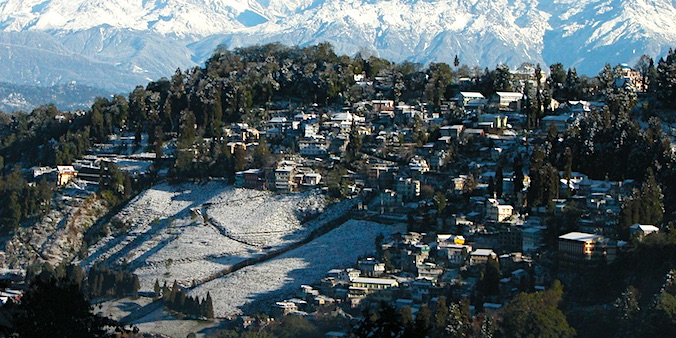
DARJEELING
DARJEELING'S TOY TRAIN


Darjeeling Tea
Yangsum Farmhouse
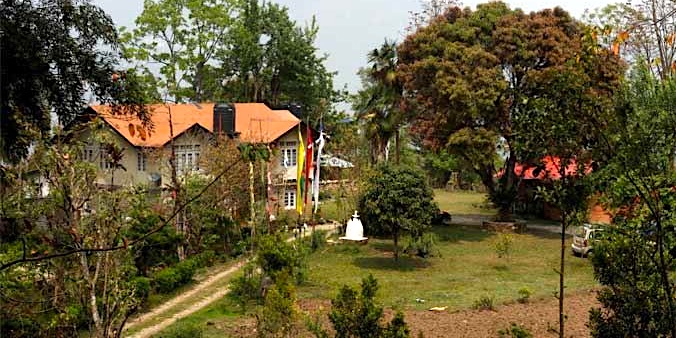

Pemayangtse Monastery
Gangtok
In Sikkim’s capital Gangtok, the rear neighbours almost always live on another street and hardly anyone has a garden, because the slopes are too steep for that. This also means that the roads are nowhere wide and often clogged. But fortunately most locations in the city can be reached on foot. Pedestrians can use a whole series of footbridges to cross busy roads. Gangtok was also the first city in India to declare its centre a pedestrian area. Here it is pleasant to stroll and shop and there are numerous ‘hip’ restaurants and cafes. Thanks to the government’s serious approach to environmental problems – a rarity in India – this is also one of India’s cleanest city centres. Interesting places to visit include the flower exhibition – with many varieties of orchids, – the Institute of Tibetology, Ranka Monastery. You may wnat to take a rid on the Gangtok Ropeway as well.

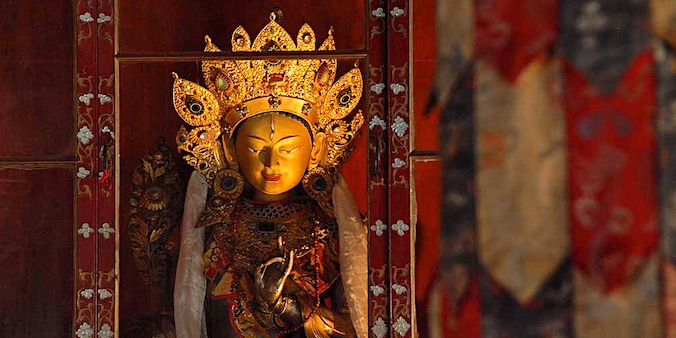
Rumtek Monastery
PHUENTSHOLING
P.M

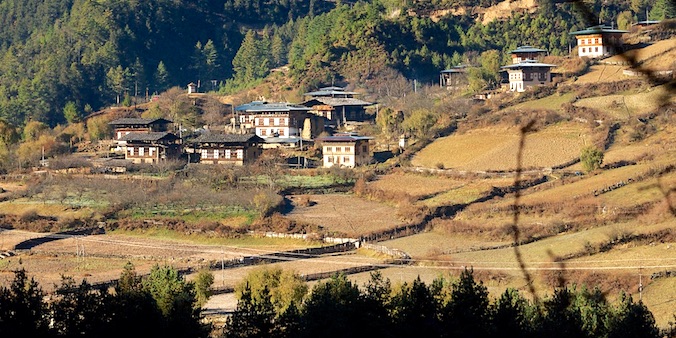
Road Chuzom - HAA
HAA
Although the flight takes only one hour, on a clear day this no doubt is one of the most spectacular flights in Asia. After leaving the North-Indian plains and the heavily forested hills you’ll cross a number of ranges before flying over the actual glacier-clad Himalayas, the highest mountain range in the world. You’ll be amazed at the different landscapes you’ll see beneath you on the other side: bare, lightly coloured mountains, tiny rivers, small hamlets of Ladakhi farms surrounded by deep-green fields of barley, made possible by ingenious forms of irrigation.
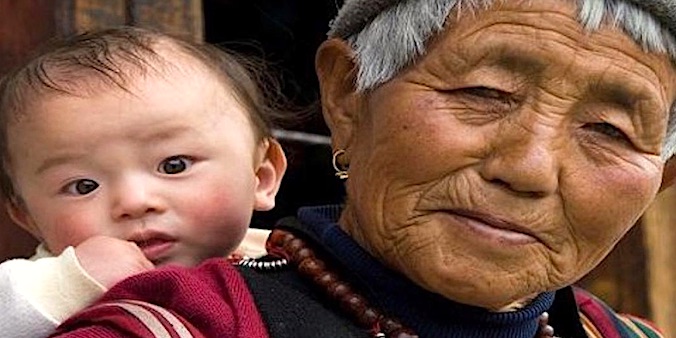

Chele La
From the Haa Valley you climb to Bhutan’s highest motorable pass, the Chele La (3988m). The narrow road creeps up through magnificent forests of enormous cedars, spruces and larches, a well as tree-high rhododendrons (which normally bloom in April-May). Once up, weather permitting, you will be treated to beautiful views of the Himalayas, especially Mt. Jhomolhari (7329 m) right on the Tibetan border. The best view you get from the road, 100 m north of the pass. Descending, you reach the Paro Valley.
TakTsang Goemba (Tigersnest)
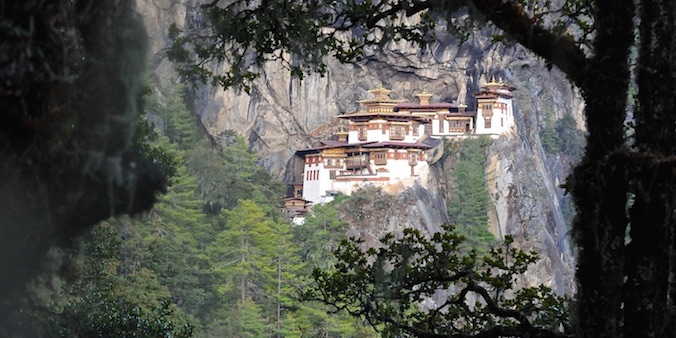
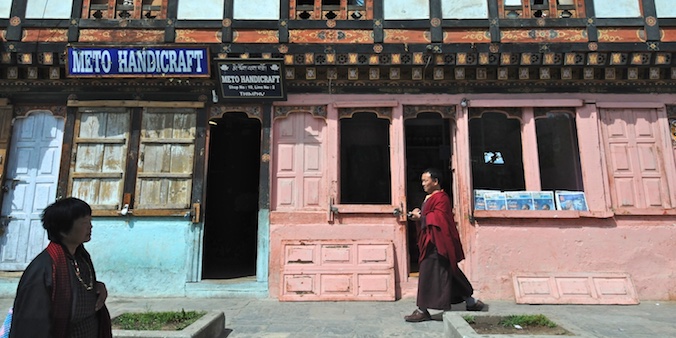
Thimphu
Sights of Thimphu


Punakha Dzong
Punakha - Other Sights
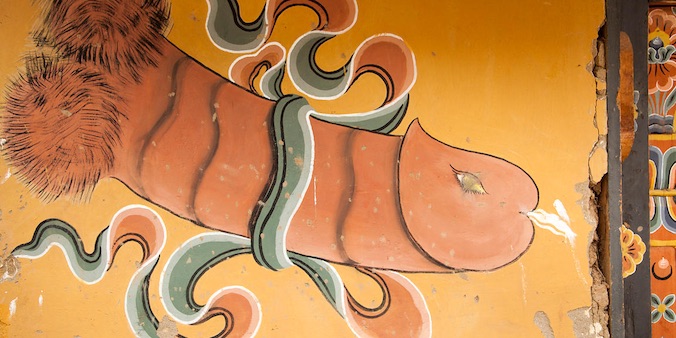
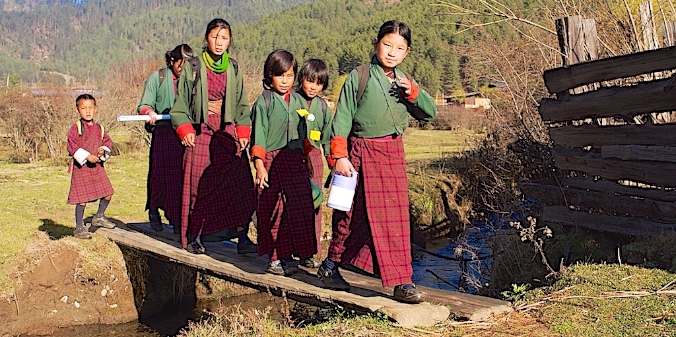
Phobjikha
Walks at Phobjikha
